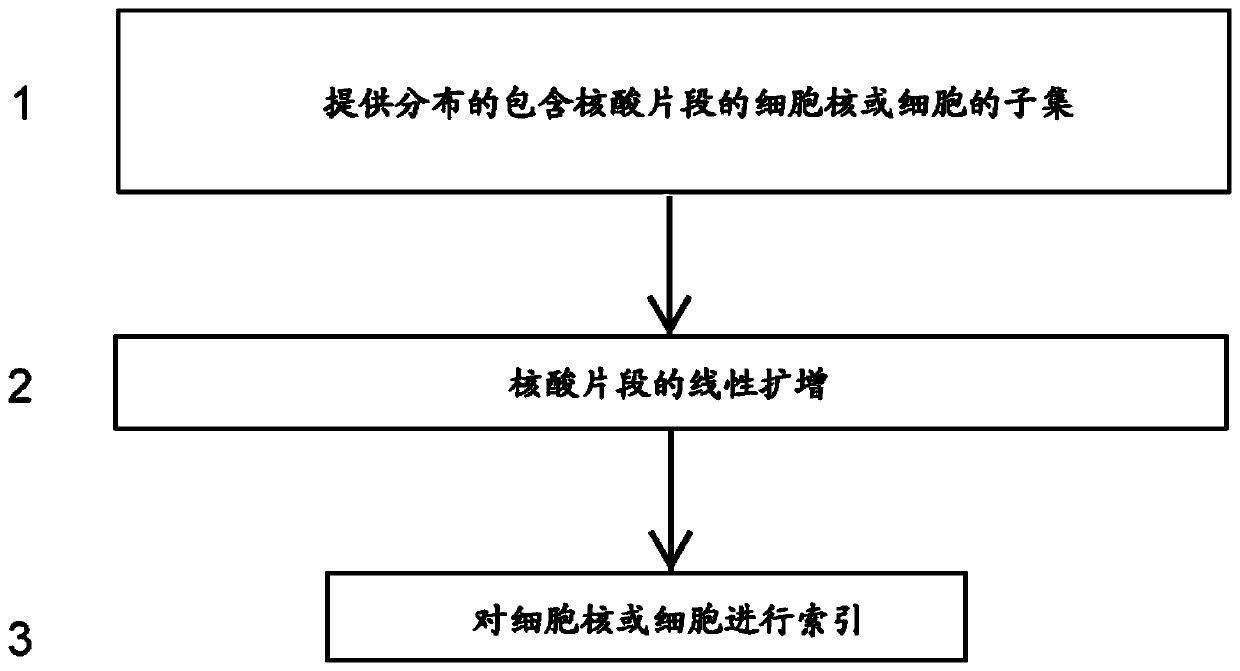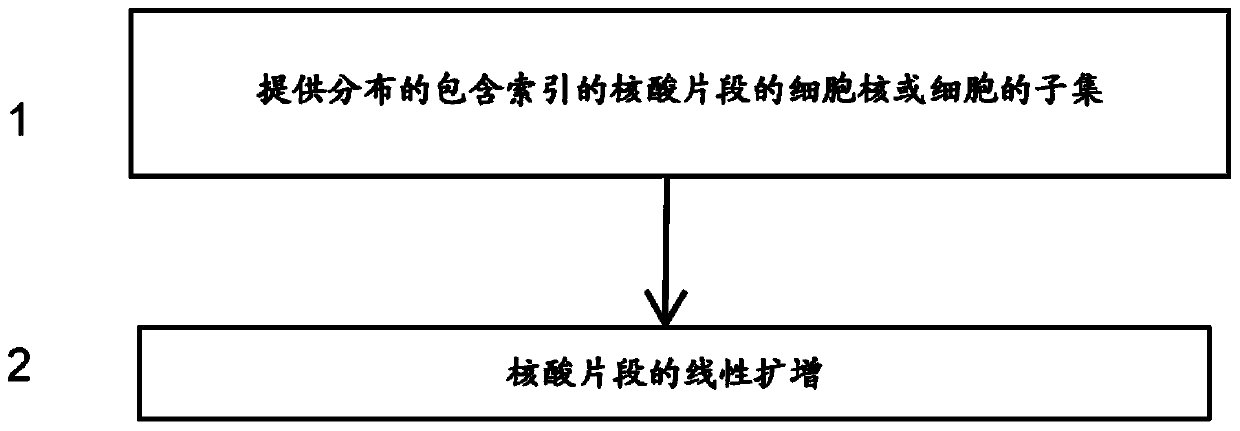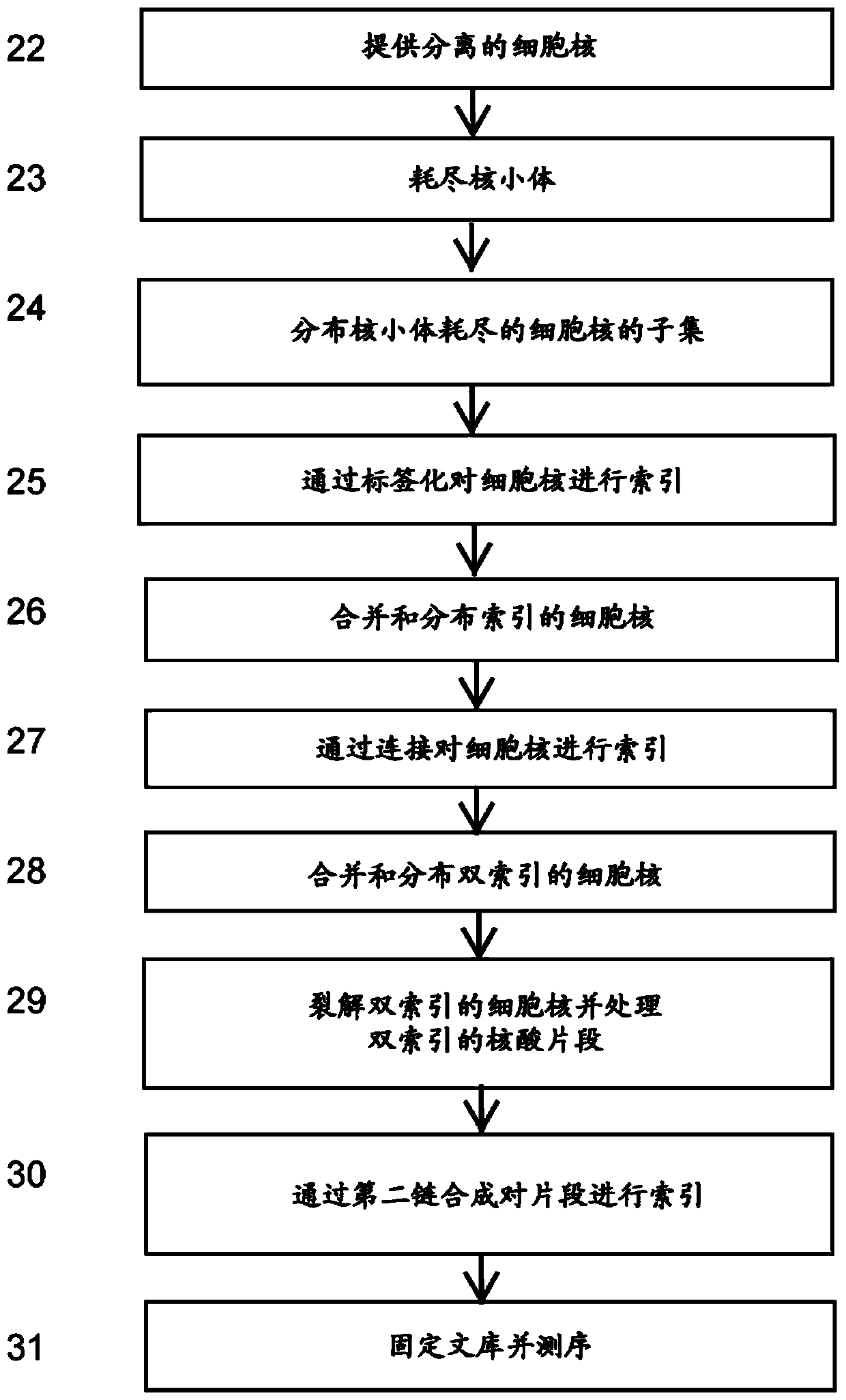High-throughput single-cell sequencing with reduced amplification bias
A single-cell, single-nucleus technology, applied in the field of nucleic acid sequencing, can solve problems such as exponential amplification bias, low throughput, and single cell compartmentalization
- Summary
- Abstract
- Description
- Claims
- Application Information
AI Technical Summary
Problems solved by technology
Method used
Image
Examples
preparation example Construction
[0148] Preparation of fixed samples for sequencing
[0149] Multiple indexed fragments can be prepared for sequencing. For example, in those embodiments in which a library of triple-indexed fragments is generated, the triple-indexed fragments are enriched prior to sequencing, typically by immobilization and / or amplification ( figure 2 block 21). Methods for attaching index fragments from one or more sources to a substrate are known in the art. In one embodiment, the indexed fragments are enriched using a plurality of capture oligonucleotides specific for the indexed fragments, and the capture oligonucleotides can be immobilized on the surface of a solid substrate. For example, a capture oligonucleotide can include a first member of a universal binding pair, and wherein the second member of the binding pair is immobilized on the surface of a solid substrate. Likewise, methods for amplifying immobilized dual-indexed fragments include, but are not limited to, bridging amplifi...
Embodiment approach 1
[0200] Embodiment 1. A method for preparing a sequencing library comprising nucleic acids from a plurality of single nuclei or single cells, the method comprising:
[0201] providing a plurality of isolated nuclei or cells in a first plurality of compartments, wherein each compartment comprises a subset of the isolated nuclei or cells, and wherein the nuclei or cells comprise nucleic acid fragments;
[0202] The cell or nucleus introduces a linear amplification mediator;
[0203] amplifying the nucleic acid fragment by linear amplification;
[0204] processing each subset of nuclei or cells to generate indexed nuclei or cells, wherein said processing comprises adding a first compartment-specific indexing sequence to nucleic acid fragments present in said isolated nuclei or cells to generate an indexed sequence in the isolated nuclei or cells an indexed nucleic acid present in a cell, wherein the processing comprises ligation, primer extension, hybridization, amplification or ...
Embodiment approach 2
[0206] Embodiment 2. The method of Embodiment 1, wherein the amplifying occurs prior to the treating.
PUM
 Login to View More
Login to View More Abstract
Description
Claims
Application Information
 Login to View More
Login to View More - R&D
- Intellectual Property
- Life Sciences
- Materials
- Tech Scout
- Unparalleled Data Quality
- Higher Quality Content
- 60% Fewer Hallucinations
Browse by: Latest US Patents, China's latest patents, Technical Efficacy Thesaurus, Application Domain, Technology Topic, Popular Technical Reports.
© 2025 PatSnap. All rights reserved.Legal|Privacy policy|Modern Slavery Act Transparency Statement|Sitemap|About US| Contact US: help@patsnap.com



